Postmortem
Design
We decided to make The Wyrd of Stromgard after Sam had made a Viking campaign for Dungeon World, spent ~50 hours on lore, made a map, and built a detailed setting she called Stromgard. We played it 3 times then moved on to another game/setting as our game group often does. Later after quitting my job to start Lost Dutchman Software she realized that she really enjoys making RPG content and there's no reason we can't make that in addition to video games- besides, the first video game we were making was wildly off schedule and it would help to get more projects out. We decided that since so much work was already put into Stromgard, we would continue with it instead of making an entirely new project from scratch.
The idea was that this would keep the production time short, just a few months to get the basic product in place, then we could launch a Kickstarter and playtest/edit the game into something we could be proud of. We thought the whole thing should have only taken 3-4 months of part time work.
It took ~6 months before we were even ready to launch a Kickstarter. The whole month leading up to the Kickstarter and the whole four weeks during it, we were full-time devoted to this single project, which put our other projects further behind. Both of our initial projects ended up going way over schedule; we need to work on scope.
You can read more on her design process here.
Production Plan
Knowing the profit margin was going to be thin and assuming that the majority of the sales would come from the Kickstarter, we shopped around quite a bit. We got quotes from almost 70 printers based on them printing 100 6x9", black and white interior, 250 page books. None of our local printers could compete with online shops. We ended up with 2 book printing plans and a few backups that were priced similarly.
Lulu.com was our plan if we sold less than 500 copies of the book. They were the cheapest at 4.86 per book, and they had the advantage of having printing locations in multiple country's. If we sold over 500 we were going to use Guangzhou Warm Printing & Packaging Co., Ltd in China. They were not the cheapest but they appeared to make a higher quality product then their competitors and publicized the benefits there employees receive. They would have been $2 per book with a minimum order of 1000 books.

The maps were even more tiered as every poster printer had different minimum orders, you can see our chart below the kind of spread we were dealing with.
18" X 24" Maps | Printer | Cost | Shipping | Pre Fold? | Total Cost | Cost Per Map |
For 100 | 134.46 | 11.55 | $53 | 199.01 | 1.99 | |
Min order 250 | 434 | 25.49 | No | 459.49 | 1.84 | |
Min order 300 | 198 | 49.14 | No | 247.14 | 0.82 | |
Min order 500 | (Local) Acme Prints | 499 | - | No | 499 | 1 |
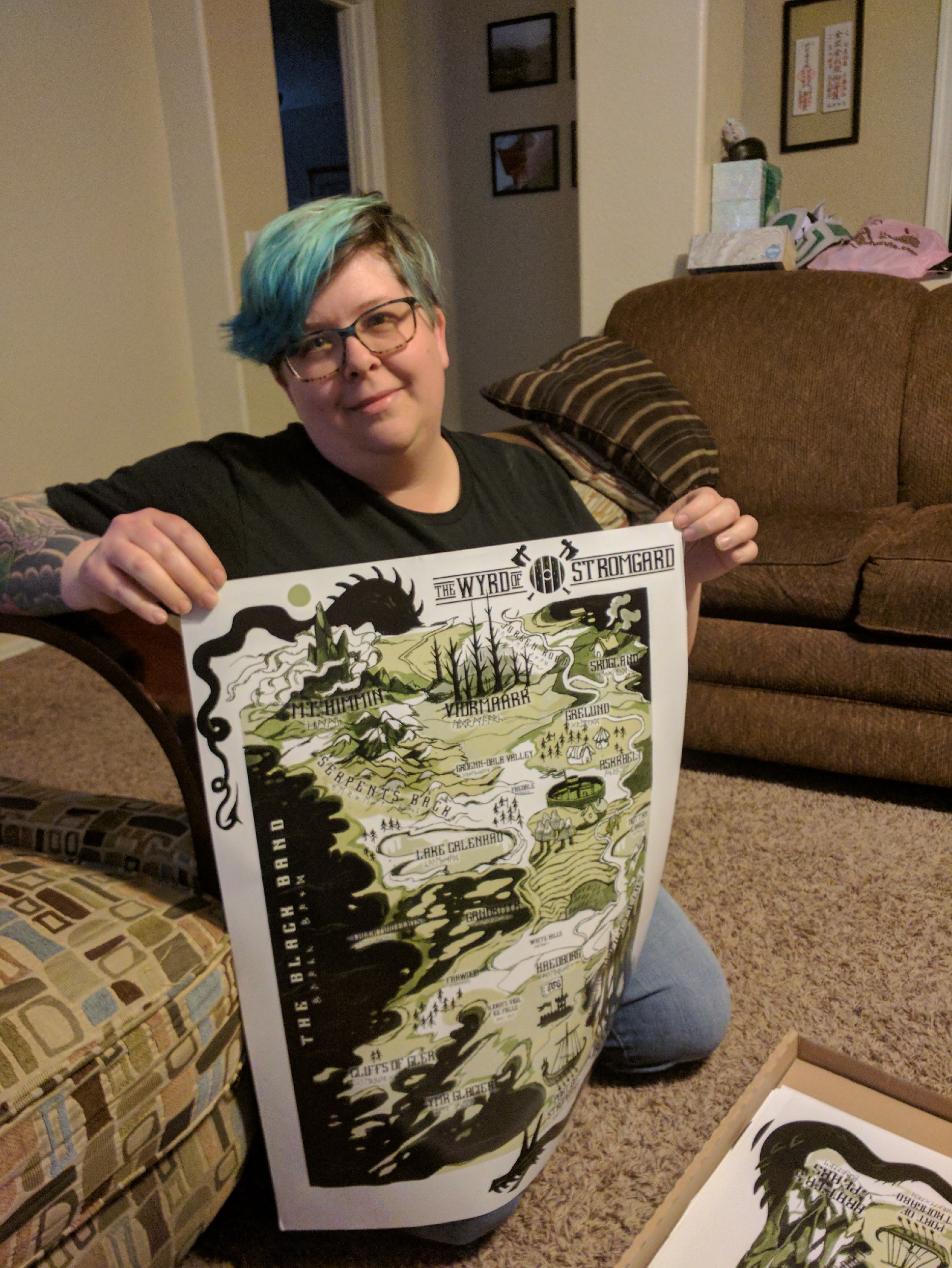
The GM screens were a lot harder to price. Going online was not helpful... the only places that produced similar materials made them far too small, or the minimum order was way too high. We drove around to ~8 print shops in Mesa and Phoenix, AZ getting quotes from ~$8k for 1000 to ~$500 for 100 until we got to PriGraphics. They took one look at my old Dragon Strike DM screen that we brought as a reference, named off a type of paper, got a sheet from the back, handed it to us, and told us it would be cheaper to make the screen a little bigger since it would involve cutting one less time. The new size was a perk and the price was $250 for 100 and we had found our printer.
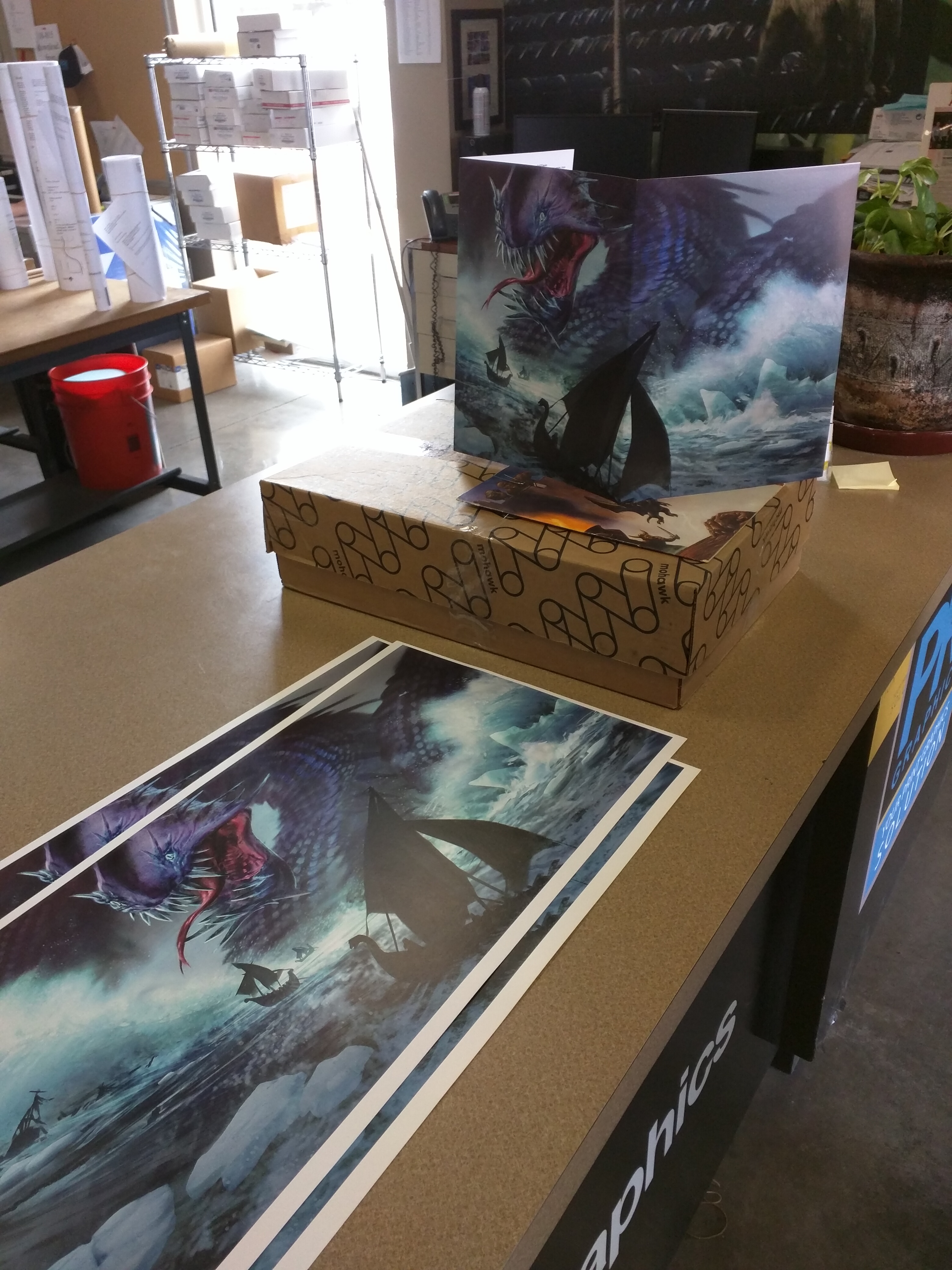
We guessed that we would sell ~50 GM Screens and Maps and ~100 physical books. So the expected costs were as follows:
- Books - Lulu.com - $4.86 each
- Maps - PrintSafari.com - $1.99 each
- DM Screens - PriGraphics - $2.50 each
Which set the prices at about $4.86 for each stand alone book and $9.35 for each bundle we would sell.
Shipping and Fulfillment Plan
First of all if you plan to do a Kickstarter go here - https://stonemaiergames.com/kickstarter/lessons/shipping-and-fulfillment/
Jamey Stegmaier was the main resource I used to figure out how I was going to handle shipping. The TL;DR is that if I tried to ship from my house in the USA to a customer internationally it would cost a lot. Also, this could provide a very negative customer experience as international backers may have to go pay a VAT tax on pickup (in the EU or Australia). Furthermore, I could pay a much smaller VAT tax than they would if I just did a little planning ahead of time (the tax paid by the buyer is based on the price of the product but for the seller, the tax paid is based on the cost of production. So for the book, a buyer would have to pay a 20% tax on $30 but if I paid the VAT it’s 20% tax on $4.86). The best solution to deal with this is to use fulfillment centers.
Shipping in the USA
Thanks to Media Mail, this was the only region we could ship from home for less than what it costs to ship through a fulfillment center. Here are our domestic shipping cost estimates:
For the GM bundle the idea was to ship the book and GM screen separately. Making the cost $10.70 to ship (or $3.45 for the book).
Description | Supplier | Cost per order | Min Order Size | Cost to ship to us | Cost per unit |
Book Envelope | Amazon | $28.45 | 100 | - | $0.28 |
GM bundle envelope | Padded Flat Rate Envelope USPS | - | - | - | - |
4 book box | Amazon | $23.66 | 25 | - | $0.95 |
Shipping Book | USPS Media Mailer | $3.17 | 1 | - | $3.17 |
Shipping GM Bundle | Padded Flat Rate Envelope | $7.25 | 1 | - | $7.25 |
Shipping 4 Books | USPS Media Mailer | $5.21 | 1 | - | $4.70 |
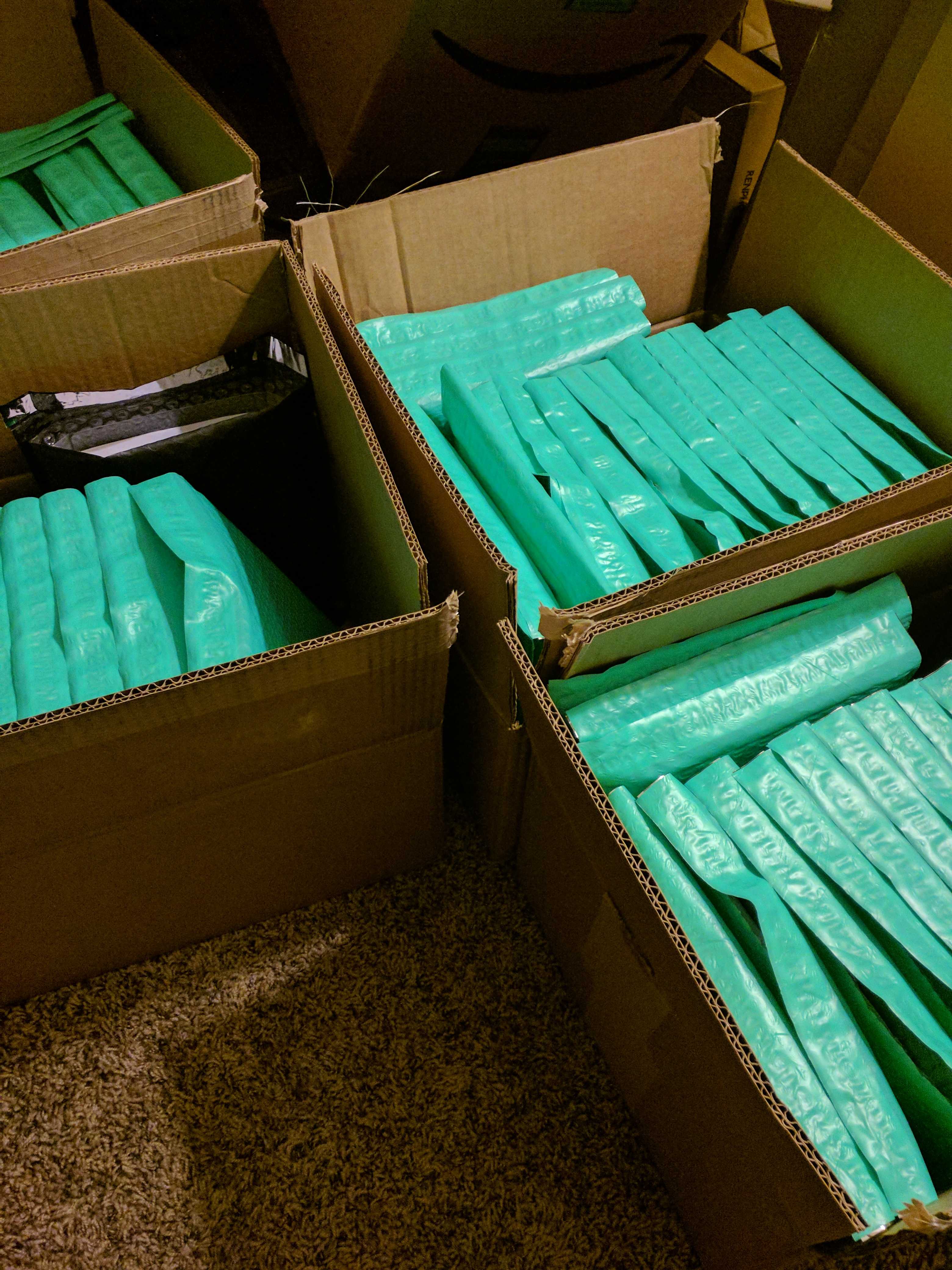
Shipping to Canada
USPS would cost $25-40 per shipment so we looked into fulfillment centers.
Company | Per Order Cost | Ave. Shipping | Ship there (100) | Total for (100)|per shipment |
37.48 | 10.76 | 232.99 | 1346 | $13.50 | |
0.00 | 9.50 | 232.99 | 1183 | $12 |
Shipping to Europe
Here, we had to use a fulfillment center regardless of the cost to ship from the US so that our customers would not have to pay outrageous VAT taxes and customs fees.
Company | Per Order Cost | Ave. Shipping | VAT consignee? | Ship there (100) | Total for (100)|per shipment |
$70 | $8.51 | Yes | 52.43 | 1023 | $10.50 | |
$25 | $14.94 | Yes | 85.08 | 1654 | $17 |
Shipping to Australia and the rest of the world
Here, we found a company called VFI that ships to Australia for the same price as the best in Australia option but they also ship to the rest of the world from China at a much better price than we could. We decided we would use them, the price per shipment depended on where we were shipping, we assumed that most of the orders that ere not in the USA, Canada, or Europe would be from Australia, so the estimated cost per shipment was ~$13.
We decided to offer free shipping to domestic buyers (baking in a shipping price with the cost of the book/GM bundle) and to offer international shipping at $5 extra. This shipping plan seemed like a good way to get more international sales, even if we profited less from each one.
Calculating a price
The expected cost of production plus the cost of shipping was:
- USA Book = $8.31
- USA GM Bundle = $20.05
- International Book = ~$16.45
- International GM Bundle = ~$22.35
We researched as many other similar projects as we could and decided based on their prices and sales that we would price the PDF at $15, the book at $30, and the GM bundle at $50. We wanted each step up to be small enough to try to entice backers to raise their pledge. Also we decided to do early-bird pricing to help get the Kickstarter off the ground.
Expected profits:
- PDF: $15 - $0 = $15
- USA Book: $30 - $8.31 = $21.69
- USA GM Bundle:$50 - $20.05 = $29.95
- International Book:$30 - ~$16.45 = ~$13.55
- International GM Bundle:$50 -~$22.35 = ~$27.65
Estimating a funding goal
We looked back over all of the similar projects, and their sales for PDF's vs books vs extra's to guess what our distribution of sales would look like. We came to the conclusion that ~50% of our sales would be PDF's, ~44% physical books, and ~6% the GM Bundle. We also assumed that we would be able to get around 350 backers. Kickstarter keeps 5% and the processing fees are around 3% per sale. We also calculated the cost of production/shipping assuming that we would sell 2 copy's in the USA for every one sold internationally.
| KS Estimate | Backers | Gross Income | Cost(Production + Shipping) | Fees(Kickstarter + Payment Possessors) | Net Income |
| Number of backers total | 350 | $6554 | $1995 | $524 | $4035 |
| PDF | 175 | $1750 | $0 | $140 | $1610 |
| Book | 154 | $3850 | $1698 | $308 | $1844 |
| GM Bundle | 21 | $945 | $297 | $76 | $572 |
We knew we needed to raise another ~2K for art, and make enough to get back the ~1k we had already spent on art. We also had a $215 advertising budget. We played with the numbers above, experimenting with how few backers we would need to make enough to break even and decided that $4000 was the lowest we could go.
Then we ran the Kickstarter and it was a success!
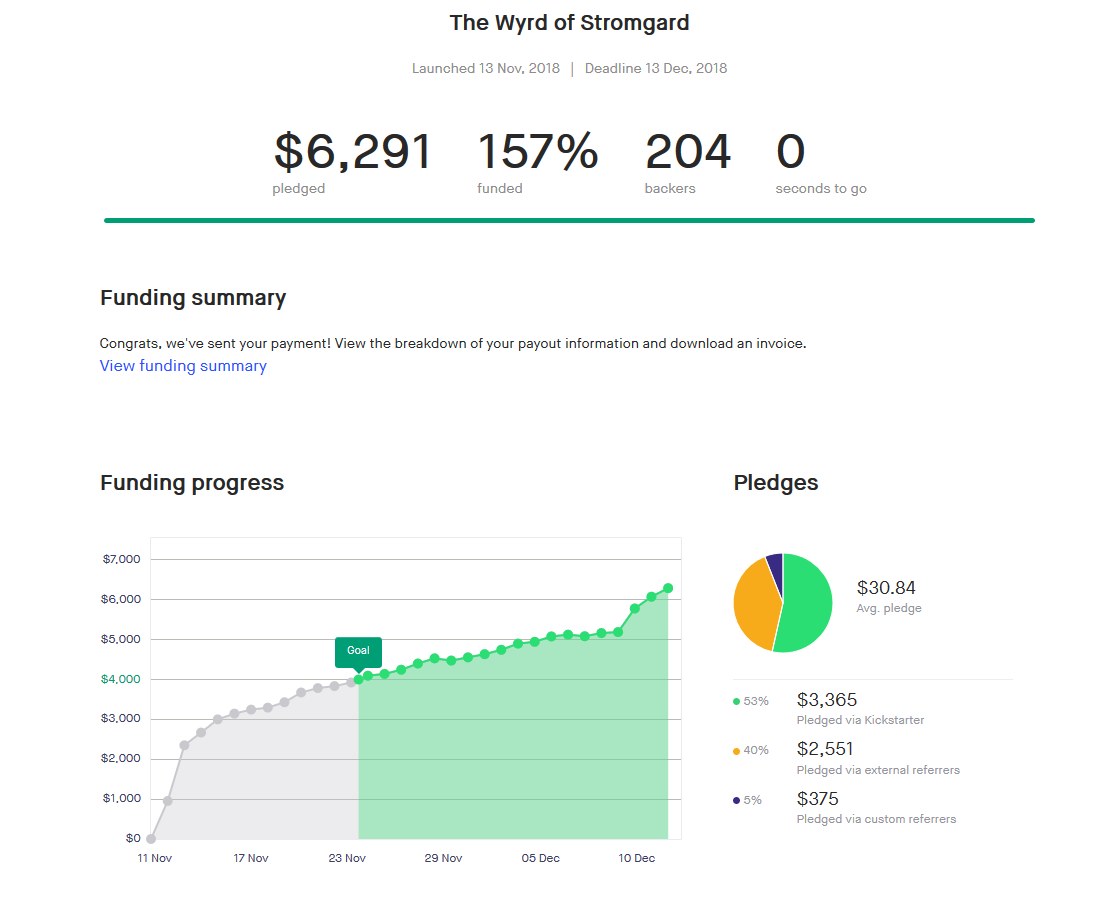
Actual Production Costs and Process
Since we are new to using printers and Lulu has a hard to use interface, we ended up needing to order 4 proofs before we were ready to have them produce all the books. We also ended up with about 100 more pages in the book then our original estimate. The actual cost was $965.69 (this included ~18 extra books in case any were damaged in shipping).
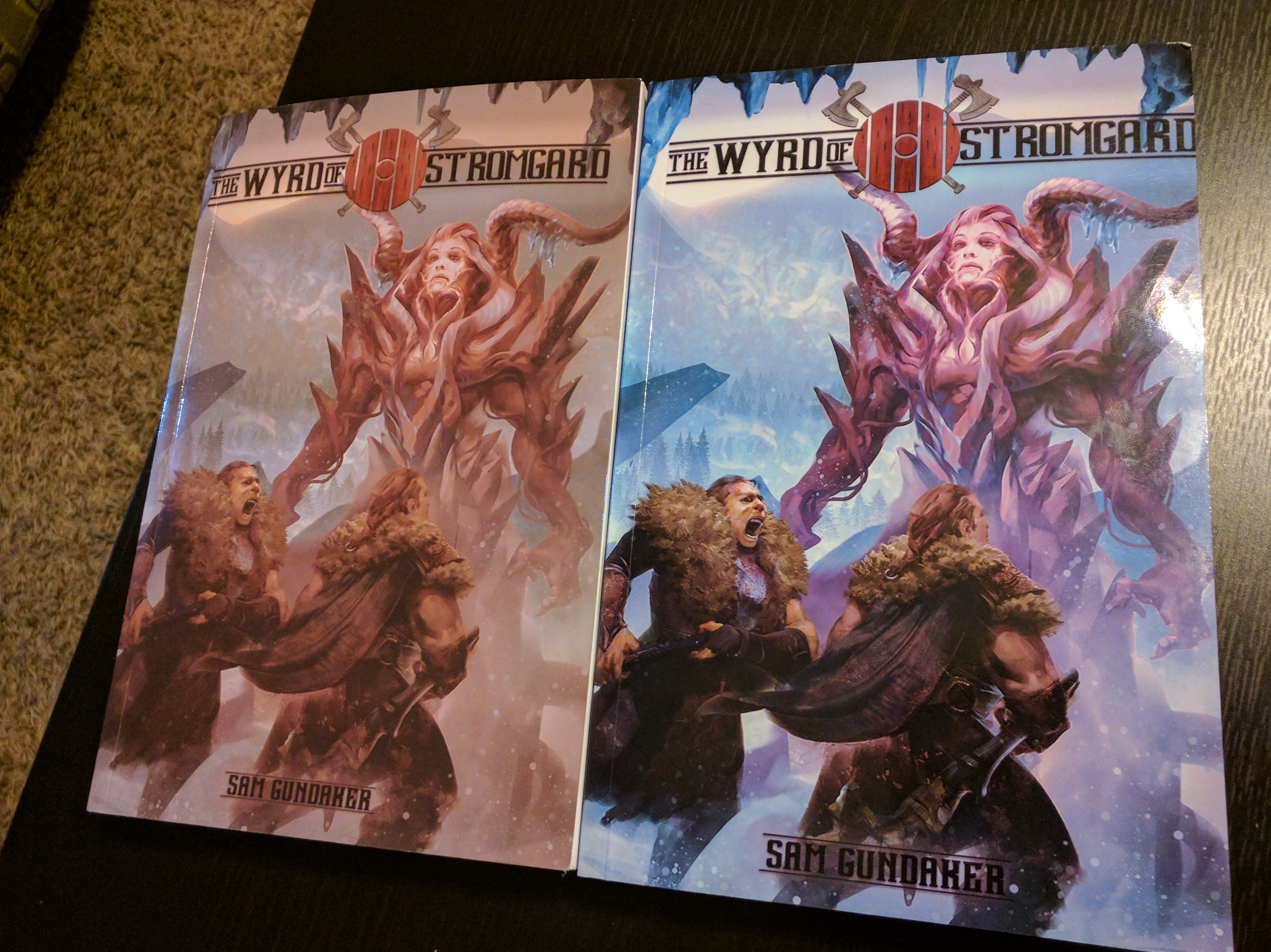
The poster printer we wanted to use for the maps raised their prices so we had to look for a new one and ended up with a company out of Germany for a total of $110.70.
The quote from PriGraphics was spot on but I forgot it did not include taxes, after taxes the cost of 100 GM screens was $270.75.
We ended up printing 150 books, and 100 GM screens+Maps.
Expected costs vs Actual costs
|
| Expected Cost | Actual Cost |
Books | $4.86 | $6.44 |
Maps | $1.99 | $1.11 |
DM Screens | $2.50 | $2.71 |
Actual Shipping/Fulfillment Costs
We did not get enough sales in Canada to use a Canadian fulfillment center, so we crunched the numbers and it was cheaper to use VFI (Based in China) for Canada as well as Australia and the rest of the world than for us to ship from the USA to Canada.
Shipping the GM screens and Maps to the UK and China fulfillment centers was $130.65. Shipping to the backers out of the UK was $312.10, and from China was $213.65. All the shipping supplies + shipping costs for the USA were $397.87.
Expected costs vs Actual costs: (Expected numbers converted to use the actual amount we sold)
|
Region [units shipped] fulfillment center | Expected | Actual | Per shipment |
USA [80] Out of our house | 493.5 | 397.87 | $4.97 |
EU [38] Spiral Galaxy | $399 | 312.10 | $8.21 |
Everyone Else [14] VFI | $182 | 213.65 | $15.26 |
Business Viability
The biggest problem with making a Dungeon World supplement is that our customer base is limited to people who have and play Dungeon World. This helped us carve out a niche as there are already a lot of viking tabletop RPGs but it limited our potential customers too much to make a project of this scope worth doing.
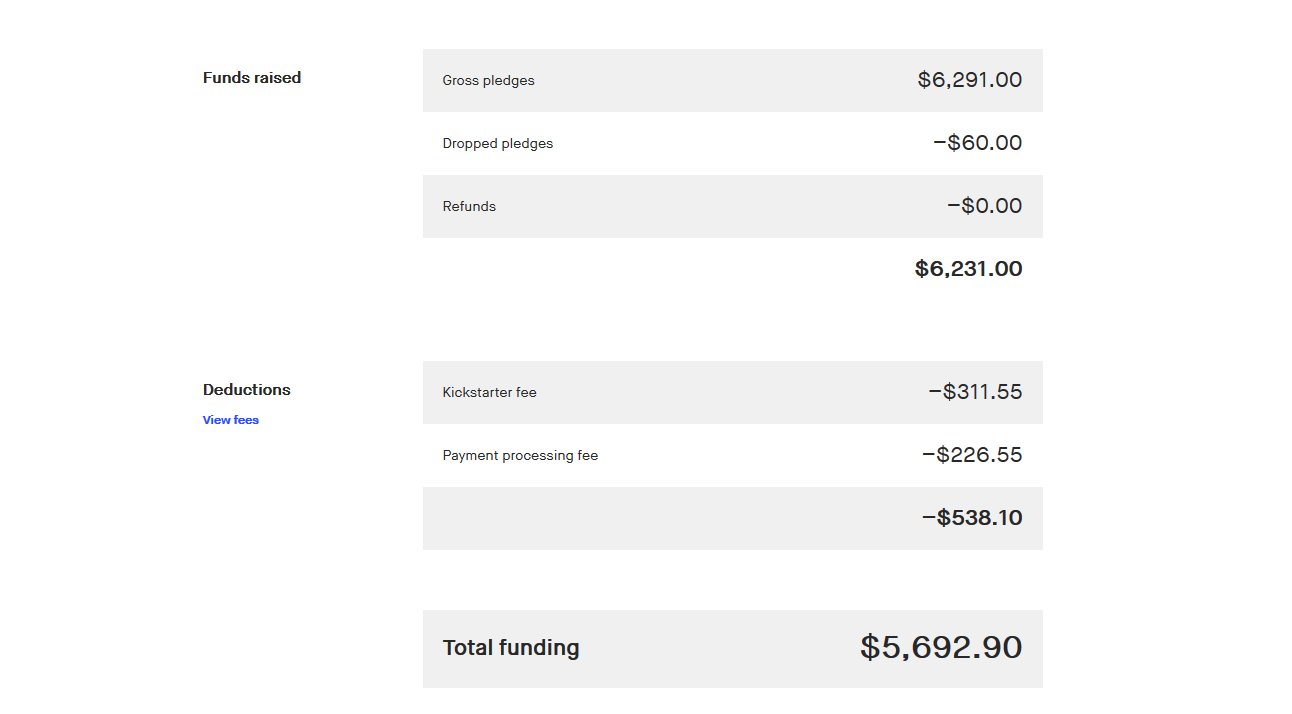
As of the close of the Kickstarter we raised $6,291. Kickstarter fees and transaction fees left us with $5,692. Art cost about $3,000, advertising was $215, production was $1,347.14, and shipping was $1,054.27. This left us with a profit of ~$75. We have since made a few more sales on itch.io and DriveThruRPG, putting us currently at a profit of $275. This project took a little less than 400 hours of work, making our current pay $0.68 per hour.
Even if the project raised the amount of money we estimated before running the Kickstarter we would only have made $785, or $1.96 per hour. In the future, we need to more carefully examine the scope of a project vs the amount of money we could reasonably make off of it. We hope that it continues selling, as we are getting ready to sell it via print on demand... at this point all sales are just profit so the amount we made per hour could go up but for now we will not be making supplements for games unless we believe we can complete them in less than 20hrs.
Get The Wyrd of Stromgard
The Wyrd of Stromgard
The Wyrd of Stromgard PDF and printable playbooks.
| Status | Released |
| Category | Physical game |
| Author | LostDutchman |
| Genre | Role Playing |
| Tags | dungeon-world, monster-manual, Norse, PbtA, pdf, playbooks, Tabletop, Tabletop role-playing game, viking |
| Languages | English |
More posts
- Charity Bundle for Bail FundsJun 04, 2020
- PWYW Content!May 04, 2020
- New Adventure Front - Blood Eagle's BurdenMar 03, 2020
- Digital Downloads + Creative CommonsJan 28, 2020
- Our experience marketing the KickstarterNov 21, 2019
- Building from the Ground Up: Stromgard's Design ProcessNov 12, 2019
- Print on Demand now availableOct 23, 2019
- The Wyrd of Stromgard is finally Release Ready!Jun 25, 2019
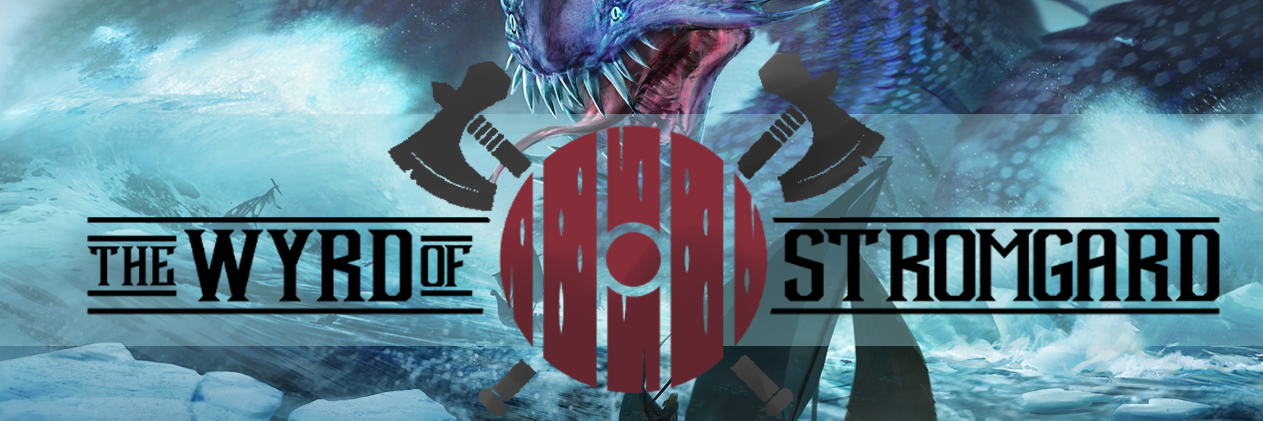
Comments
Log in with itch.io to leave a comment.
Once again, a top-notch article. Thanks for writing it. I featured the post on /devlogs and posted it on our twitter, hopefully you get a few more views.
Thank you so much!!
Really great article, thanks a bunch for writing it!
In a sense, your $0.68/ hour business was a failure (although keep in mind that LOTS of people lose money starting gaming companies). That makes it the hardest thing to write about, because no one likes to tell the world "I'm a failure!"
But at the same time, if you've read The Lean Start-up, or any other book from the Lean business movement, you'll know that the most important thing a new start-up produces isn't their first product: it's the knowledge they acquire which leads them to a viable business model.
Everything you do as a new business is essentially a series of experiments to find that viable business model, and if an experiment fails to yield it, hopefully it at least suggests some potential "pivots" you could take to make that business viable (eg. switching to a production model that involves less up front time investment).
I say all this both because you're very brave to report your failure, and because I hope to give you some small inspiration about how you actually achieved something great ... but also to thank you.
Again, this sort of thing is so hard to share, but precisely because there are lots of other people who would like to form gaming start-ups, and precisely because it's so hard to share ... that makes the information you've presented here all the more incredibly valuable to any such person who reads it.
Thank you very much for "performing the experiments" with your business, thank you very much for sharing the results, and best of luck in pivoting to a model that works better for you!
Thanks! It was a good learning experience, and I hope that by sharing it others can learn from it as well. We have been working on scope since this Kickstarter ended, and have gotten much better at getting a minimum viable product made within a month. That helps us fail faster, and at less of a cost. We are trying to be more vocal about each thing we make, and if something resonates with enough people we plan to pursue that. One of the problems with Stromgard was that we made something we were exited about without verifying that a lot of other people would be as well.
EDIT: I wanted to come in and clarify that we expected Stromgard to sell only a little better than it did. We expected it to be a failure as a business (Its not a failure as a game, we are very proud of the end result).
Our big failure was that we misjudged how long it would take to make. Spending a few months working on it in our spare time to learn how to run a Kickstarter and produce a quality game, even if it did not make much money, would be no problem. The actual result is that we sank hundreds of hours into a project that we knew would not pay off. We did however gain what we set out for, we learned a lot from this project. It wont be our last!